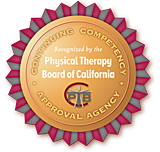
Learning The Method
MNRI® Reflex Integration: Maximizing Brain Potential
Course Overview
Learning, planning, and the development of inner control are some of the most important functions of the brain’s cortex. Successful development of these skills ultimately depends upon the physiological maturation of the brainstem (myelination of the extrapyramidal nerve net) through early movements and sensory motor integration, which lie at the foundation of human development. Movement, behavioral and learning challenges often result when reflex patterns do not develop properly, are immature, and/or are poorly integrated in comparison with typical patterns of development. In addition, primary reflex patterns may not function appropriately following significant life stressors and/or trauma that children and adults may experience. In fact, data collected from thousands of MNRI® assessments over the past 20 years demonstrate that as the number of non-integrated primary motor reflex patterns in neurotypical children increase, the number and severity of learning challenges correspondingly increases. This course explores the role reflexes play in developing higher order cognitive functions including focusing, long-term memory, rational thinking, planning, academic learning and decision-making. Understanding this connection, combined with the knowledge of MNRI® techniques for re-patterning and integrating dysfunctional or poorly integrated reflexes, can help children and adults move closer to reaching their fullest learning potentials and social/emotional growth.
MNRI® Reflex Integration: Maximizing BrainPotentials course explores:
- The theoretical and physiological basis of the MNRI® Method and the role primary
- motor reflex integration plays in learning
- The progression of primary skills necessary for optimal learning
- MNRI® techniques designed to re-pattern and integrate specific primary motor reflexes
- Techniques to create MNRI® reflex integration programs for individual students/clients
- Hands on activities to incorporate course content into daily school, clinic and home practice
Learning Objectives: MNRI Reflex Integration: Maximizing Brain Potential
1. Describe how the Masgutova Neurosensorimotor Reflex Integration (MNRI®) method is based on activation of the innate nature of the sensory-motor reflex system to increase self-
regulation.
2. Explain how the eight archetypal movements as first biomechanics of motor development can restore healthy neurosensorimotor integration of reflex patterns, motor coordination, and
skills affecting optimal emotional and cognitive functioning, and neurodevelopment overall.
3. Summarize the role of a reflex and its sensory, motor and central nervous system connections in the development of feeling safety.
4. Explain how the brain engages in protection and negative survival vs open style of learning and development.
5. Describe the physiological and psychological basis for primary sensory-motor reflexes and their maturational stages in the development of a sense of wellbeing.
6. Explain the maturational role primary motor reflexes play in the motor system and the effect of dysfunction on learning, behavior, social, emotional, and physical skills and development.
7. Describe the maturational role primary sensory-motor reflexes play in developing advanced cognitive skills and behavioral regulation.
8. Explain the maturational role primary sensory-motor reflexes play in the formation of specific academic and social skill sets that affect self-regulation in a classroom setting.
9. Explain how the lack of consistent development of primary sensory-motor reflex patterns and archetypal movements impact the development of positive learning, behavioral and social
skills.
10. Analyze the impact integration (vs delayed maturation) of each reflex can have on learning skills, including motor skills, communication skills, cognitive development, emotional and
behavioral regulation and general over-all academic achievement.
11. Apply and practice direct hands-on training designed to activate and integrate each of the 13 reflexes introduced in this class.
12. Describe the specific MNRI® techniques used in dealing with unique and challenging situations in the classroom as well as specific techniques for working with children and
adults diagnosed with ADD, ADHD, Dyslexia, Dyspraxia, Genetic Disorders, Anxiety, PTSD, and other challenges.
13. Describe how to use the knowledge received in this class in large and small group situations as well as on an individual basis.
14. Describe strategies on how to incorporate the techniques learned in this course for use in developing a plan of care and specific home programs.
15. Apply and practice hands-on training provided for each of the eight archetypal movements Described in this course.
16. Apply and practice hands-on training provided for the following reflexes: Robinson Hands Grasp, Pyramid Finger Activation, Sequential Fingers Opening and Closing, Hands
Supporting, Foot Tendon Guard, Automatic Gait, Bauer Crawling, Asymmetrical Tonic Neck Reflex, Spinal Galant, Symmetrical Tonic Neck Reflex, Bonding, Fear Paralysis, Eye
Tracking.
AGENDA
Day 1:
Hour 1-- Movement as basis of Natural Development of a person
Hours 2-3--Masgutova Method® of Neruosensorimotor Reflex Integration
Hour 4--Reflex integration links involved in the development of overall learning skills.
Lunch 1 hour
Hours 5-6--Bauer Crawling and Automatic Gait reflexes
Hour 7--The Pavlov Orientation Reflex and motivation to learn within a classroom
Day 2:
Hour 1--Spinal Galant Reflex Pattern
Hours 2-3-- Asymmetric Tonic Neck Reflex and Symmetric Tonic Neck Reflex
Hour 4--Robinson Hands Grasp and Sequential Fingers opening reflexes.
Lunch 1 hour
Hour 5-- Bonding reflex
Hour 6-- Developing an individual MNRI program
Hour 7--Techniques review and activities incorporating MNRI techniques.




